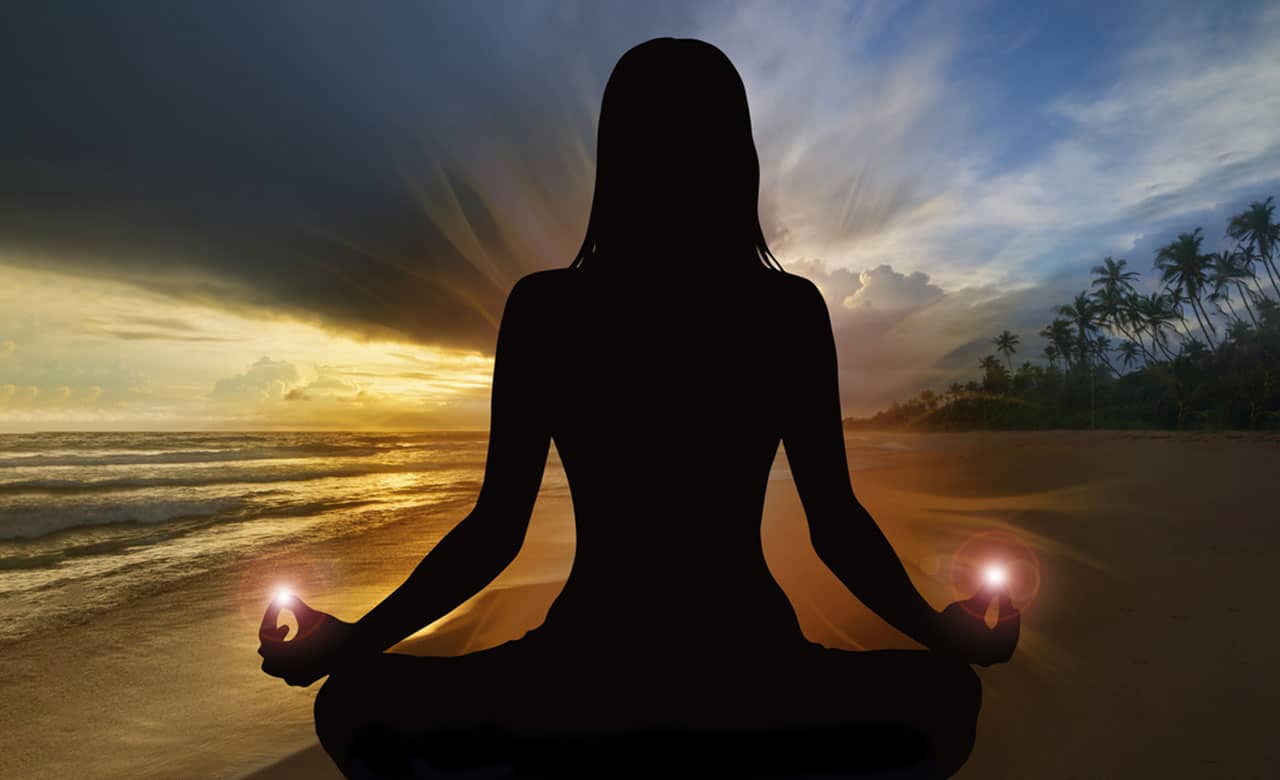
Spirituality
What is Divine Consciousness
There are many ways to experience divine consciousness—and when you look at animals in nature, their ability to experience divine consciousness is evident. But what about us? Do we have this ability as well? Let’s take a look at some of the ways that humans experience divine consciousness.
Consciousness. What is it?
In simple terms, consciousness is being aware of internal and external existence. In spiritual terms, it’s a journey from the outer world toward the internal state of being. Many name it a mind, inner world, an act of introspection, thought, imagination or violation.
As human intelligence advanced further, we added feelings, emotions, cognition, experiences, or perception to this list. As civilization developed, man further explored this relation of the mind and the body, adding terms like wakefulness, soul, selfhood, stream of thoughts, mental events, and processes to the list. Combining all these together, we have consciousness.
What does science say about consciousness?
Even though science cannot entirely explain what consciousness is, it has a clear idea of where it originates. Consciousness is closely related to a part of the brain called the cerebral cortex. It is a thin, folded sheet of nervous tissues, rich with millions of neurons. Thanks to advanced medical science, we know that each experience creates a neural pathway connecting the brain neurons, also known as neuronal correlates of consciousness. When these neurons are layered, as per the degree of consciousness, the magnetic pulse can be measured, underlining the intensity of the experience.
Stages of consciousness as per the Indian school of spirituality.
Written in the first millennium before the common era, the Isha Upanishad is one of the shortest Upanishads, embedded as the final chapter of Yajurveda. This ancient scripture entertains the concept of Chaitanya, or, that is, consciousness. It goes into detail transcribing the seven stages of consciousness as the Atman or self manifests itself to the Prakriti. These seven stages are:
1. Annamaya Purusha – Physical
2. Praṇamaya Purusha – Nervous/vital
3. Manomaya Purusha – Mental / mind
4. Vijnanamaya Purusha – Knowledge and truth
5. Anandamaya Purusha – Pure Delight, otherwise known as Bliss
6. Chaitanya Purusha – Infinite divine self-awareness
7. Sat Purusha – State of pure divine existence
In other words, each of us begins our spiritual journey with life happening to us. As we proceed ahead, we try to learn new things and the way of life, and we make life happen as we wish. When we truly step into the spiritual realm, we start seeking inwards with the realisation that real life is happening within us. As we proceed further into the spiritual practice, our mind becomes aligned with our body and our surroundings.
This stage is when life happens to us. On the next stage of this journey of ever-developing consciousness, we reach the stage where life happens through us. All this journey ends when we merge with the universal consciousness, understanding that LIFE IS US. This brilliant journey of consciousness, which has started from life happening to you to the realisation that life is us, is called the soul’s journey toward the divine consciousness.
Thousands of Indian philosophy schools discuss the concept of divine consciousness, taking help from various terms like Atman, Ahamkara, Chitta, and Prakriti. Atman is the purest form of the individual, separated from all the Ahamkara (ego), Chitta (mind), and Prakriti (existential embodiment). That is when the purest form of us merges with the Parmatma (Param+Atma or the ultimate soul). This point of the spiritual journey where Jivatman meets Parmatman results in divine consciousness.
Achieving higher levels of consciousness
Shiv-Dyan Upanishad, commonly known as Vigyan Bhairav Tantra, is an ancient text written about 1400 years ago, which is framed as the discourse between Shri Bhairava and Maa Bhairavi. This Tantric text extensively discusses the different modes of meditation by which one can attain divine consciousness.
Meditating while focusing on everything simultaneously:
निजदेहे सर्वदिक्कम् युगपद्भावयेद्वियत् । निर्विकल्पमनास्तस्य वियत्सर्वम् प्रवर्तते ॥
Nijdehe sarvadikkam yugapadbhavyedvyat। Nirvikalpamanastasya viyatsarvam Pravartate ॥
All of the directions should be considered at the same time in one’s own body as space or empty. The mind, free of all thoughts, dissolves in the void realm of divine consciousness.
Meditating while focusing on the entire universe through space and time:
भुवनाध्वादिरूपेण चिन्तयेत्क्रमशोऽखिलम् । स्थूलसूक्ष्मपरस्थित्या यावदन्ते मनोलयः ॥
Bhuvanadhwadirupen Chintayetkramsho’khilam । Gross subtle situation Yavdante Manolaya: ॥
Focusing on the complete shape of the cosmos and its evolution through time and space, the gross is progressively transformed into the subtle, and the subtle into the state of being beyond, until the mind is finally transformed into pure consciousness.
Meditating while focusing on the extremely stable mind:
सर्वं देहं चिन्मयं हि जगद्वा परिभावयेत् । युगपन्निर्विकल्पेन मनसा परमोदयः ॥
Sarvam dehan chinmayam hi jagadva paribhavayet। Yugapannirvikalpen Mansa Parmodayah: ॥
One should concentrate with an unwavering mind on all existence, the body, and even the universe simultaneously as nothing but consciousness, then the supreme consciousness arises.
Meditating while focusing on the breath:
वायुद्वयस्य सम्घट्टाद् अन्तर् वा बहिरन्ततः । योगी समत्वविज्ञानसमुद्गमनभाजनम् ॥
Vayudvayasya Samghatad AntarVa Bahirantatah: |Yogi Samvatvigyan Samudgamanbhajanam ॥
The yogi achieves equilibrium and becomes suitable for the correct manifestation of divine consciousness through the unification of both Vayus (Prana and Apana) inside or outside (the body).
Meditating while focusing on the body movement:
चलासने स्थितस्याथ शनैर्वा देहचालनात् । प्रशान्ते मानसे भावे देवि दिव्यौघम् आप्नुयात् ॥
Chalasane sthita syath shanairva dehchalanaa।Prashante Manse Bhave Devi Divyaugham Apnuyat ॥
O Goddess, by slowly swinging or swaying one’s body, one achieves a calm state of mind and floats into the stream of divine consciousness.
Meditating while focusing on yourself:
व्योमाकारं स्वमात्मानम् ध्यायेद्दिग्भिरनावृतम् । निराश्रया चितिः शक्तिः स्वरूपं दर्शयेत्तदा ॥
Vyomakaram Swamatmanam Dhyayeddigbhirnavratam। Nirashraya Chitihi Shaktihi Swarupam Darsayettada ॥
When one meditates on one’s own self in the form of unlimited space (in all) directions, the mind is suspended, and shakti in the form of divine consciousness is revealed as the form of one’s own self.
Per the Sanatana, every Atman’s goal is to meet with Parmatman or the divine consciousness to attain the Mukti (salvation). Meditation is the best way to experience that divine consciousness that connects everyone and everything in this universe. Few do it by focusing on the body, and few do it by focusing on the breath. Some try to reach the divine consciousness through meditation while concentrating on nothingness, while few do it by focusing on the entire universe. The importance lies in the will to know and merge with the divine consciousness, and meditation is the way to do it.
The concept of divine consciousness is one that many people need help understanding. This is because it contradicts our own personal experience and intuition. However, if we look at the idea of divinity from a different perspective, we can see how it fits together perfectly with our own personal experiences.
There has yet to be a consensus among scientists or philosophers on what consciousness really is. But it’s clear that there are many different explanations for this phenomenon, and which one applies to you depends on your beliefs. The best way forward for humans is to accept their own consciousness as an essential part of who we are and look for ways to deepen our understanding of it!
We hope you have gained some new insight into the concept of divine consciousness.
Please subscribe to our mailing list to stay connected and receive spiritual information. In case of any queries, please write to us at info@chamundaswamiji.com. You can check out our YouTube channel Chamunda Swamiji where you can learn Tantra, Mantra, Yantra, and Meditation from His Holiness Shri Chamunda Swamiji.
Post a Comment
-
Subscribe to Our Blog
-
Categories
-
Popular Articles
- Dead moth in the house. What universe is trying to tell you?
- Vivah Bandhan Curse – What Is It and How to Spiritually Heal It.
- Tripura Sundari | The Dasa Mahavidya
- What are Beej Mantras?
- The Dasa Mahavidyas
- Ramakrishna Paramhansa – The Man who almost became a Woman
- Maa Bhuvaneshwari | The Dasa Mahavidyas
- Maa Chinnamasta | The Dasa Mahavidyas
- How does the Moon Affect Us?
- Maa Bhairavi | The Dasa Mahavidyas



